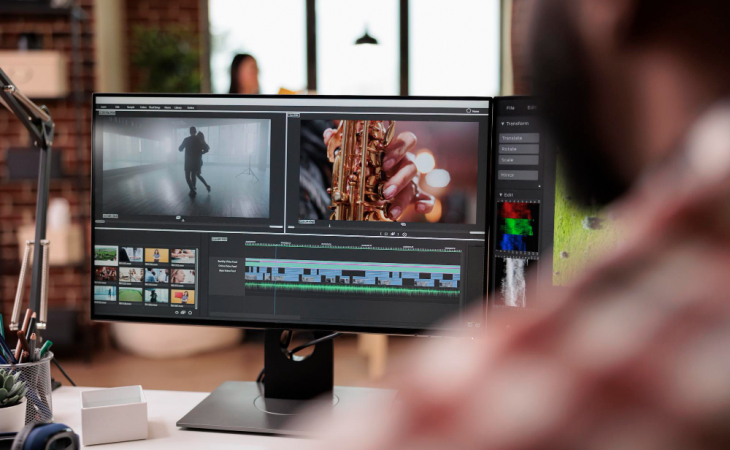Visual Communication Design: Exploring Beyond aesthetics
Share

Visual communication design is a powerful tool that goes beyond mere aesthetics. It is a form of communication that utilizes images, colors, typography, and other visual elements to convey messages and ideas. In today’s fast-paced world, where attention spans are diminishing, visual communication design plays a crucial role in capturing and retaining the attention of the audience. Whether it is a logo, a website, an advertisement, or any other form of visual content, the design has the ability to create a lasting impression and evoke emotions.
The Importance of Visual Communication Design
Visual communication design is not just about making things look pretty. It serves a much deeper purpose and has a significant impact on how people perceive and interact with brands, products, and services. Research has shown that the human brain processes visual information much faster than text-based information. In fact, studies have found that people remember only 10% of the information they hear after three days, whereas they remember 65% of the information when it is accompanied by relevant visuals. This highlights the importance of visual communication design in capturing and retaining the attention of the audience.
Different Types of Visual Communication Design
Visual communication design encompasses a wide range of mediums and formats. From traditional print media to digital platforms, visual designers have the opportunity to create impactful designs across various channels. Some of the different types of visual communication design include:
Graphic Design
Graphic design is the most common and widely recognized form of visual communication design. It involves creating visual content for both print and digital media. Graphic designers use typography, images, colors, and layout to convey messages and communicate ideas effectively.
Web Design
The focus of web design is to craft websites that are visually appealing and easy to navigate for users. It involves the use of various elements such as layout, color scheme, typography, and imagery to enhance the user experience and convey the brand’s message.
Motion Graphics
Motion graphics combine animation, typography, and music to create visually engaging content. This form of visual communication design is often used in videos, advertisements, and presentations to convey complex ideas in an easily digestible format.
Visual Communication Design in Branding and Marketing
Visual communication design plays a crucial role in branding and marketing. It helps businesses create a strong and memorable brand identity that resonates with their target audience. A well-designed logo, for example, can instantly communicate the values and personality of a brand. Similarly, a visually appealing website or advertisement can capture the attention of potential customers and drive them to take action.
In marketing, visual communication design is used to create visually stunning advertisements, social media posts, and other promotional materials. These designs are carefully crafted to evoke emotions, convey messages, and ultimately persuade the audience to engage with the brand or make a purchase.
How Visual Communication Design Can Enhance Your Brand
Visual communication design has the power to enhance your brand in several ways. By creating a cohesive and visually appealing brand identity, you can establish a strong presence in the market and build trust with your audience. A well-designed logo, website, and marketing materials can leave a lasting impression and make your brand more memorable.
Furthermore, visual communication design can help you effectively communicate your brand’s message and values. Through carefully crafted visuals, you can convey complex ideas in a simple and engaging manner. This makes it easier for your audience to understand and connect with your brand, and t create a graphic design portfolio.
The Future of Visual Communication Design
As technology continues to advance and shape our world, the future of visual communication design holds immense potential. Virtual reality (VR), augmented reality (AR), and other emerging technologies are revolutionizing the way we consume and interact with visual content. These technologies provide new avenues for designers to create immersive and interactive experiences that blur the line between the physical and digital worlds.
Advancements in artificial intelligence (AI) are also transforming the field of visual communication design. AI-powered tools can analyze vast amounts of data and generate visuals that are tailored to individual preferences and needs. This level of personalization allows designers to create highly targeted and relevant visual content, resulting in more meaningful and impactful communication.
As the digital landscape continues to evolve, graphic design courses will become even more crucial in capturing and retaining audience attention. By staying abreast of the latest trends and technologies, designers can harness the power of visual communication to create experiences that inform, inspire, and captivate.
Visual communication design is a powerful tool that goes beyond aesthetics. It plays a vital role in engaging the audience and communicating messages clearly and efficiently. Whether it is through graphic design, web design, motion graphics, or any other form of visual content, designers have the opportunity to create impactful designs that enhance brand identity and drive engagement.
By understanding the importance of visual communication design and staying up to date with the latest trends, businesses can harness the power of design to create a strong and memorable brand. So, embrace the power of visual communication design and unlock the full potential of your brand.

